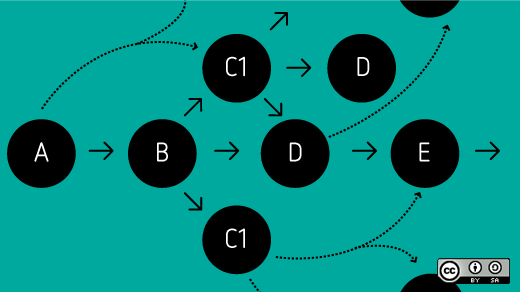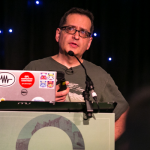On opensource.com you may often encounter references to "the open source way". My colleagues at Red Hat who use this phrase are, I think, looking at the most iconic, mature and commercially significant examples of the development model that is, today, closely associated with open source software, and are distilling certain general principles or values from such examples. Many active contributors to opensource.com are particularly interested in exploring how these same values are being applied in domains far removed from software development. Chief among these “open source way” values are transparency, community, and meritocracy.
I respectfully dissent from any simple equation of “open source” with those values. Don’t get me wrong: those are great and inspirational concepts, and I am particularly pleased that they form a core part of Red Hat’s corporate identity today. But open source is more, and less, than those things.
The term “open source” originated in a 1998 marketing campaign by some developers and entrepreneurs to encourage enterprise adoption of what had previously most often been called “free software”. Rebranding was a part of the strategy. I mention this because I think there is a tendency today for some who are less familiar with this history to make too much of the word “open” in “open source”. Certainly it was not intended as a general reference to a principle of information transparency, but rather a recognition that source code availability to users was a necessary condition for software to be "free as in freedom".
Necessary, but not sufficient. Indeed, a flaw in the term "open source" is that it seems to place sole emphasis on source code availability per se. Source code licenses that prohibit redistribution, and which require payment of a license fee and signing a non-disclosure agreement, have been around for as long as software companies have been asserting copyright and trade secret rights in software. The modern free software movement began in large part as a reaction against such licensing.
What the term “open source” fails to capture is the bundle of legal rights granted to users — broad freedoms to copy, modify, and redistribute — that make open source FaiF. These rights, if coupled with source code availability, are sufficient for distributed software to be open source. All community efforts to define free software, or open source, rest on this understanding.
To me, then, open source is not a development methodology, let alone a distillation of broadly-applicable principles seen as underlying such a methodology. Rather, open source is a specific legal model of property rights transfer. To put it differently, open source is about freedom to use, modify, and share creative material that could otherwise be severely legally restricted by the author. (Source code availability is relevant because otherwise the freedom of modification would be practically impossible to exercise.)
What we think of as the modern open source development model – involving public collaboration, community-building, transparent development, and meritocratic participation – is a side effect of the open source legal model; it is not intrinsic to it. There are plenty of open source projects that are not especially meritocratic. There are plenty of open source projects that are less than completely transparent, or which do not effectively build any user or contributor communities to speak of.
Moreover, not all collaborative community software development models are justifiably considered open source (for a good example of one that isn’t, see the Code Project). In recent years we have seen successful extensions of the free software model to non-software endeavors; a notable example is Wikipedia, where all contributions are licensed under CC-BY-SA, a license which grants permissions equivalent to those available under copyleft software licenses. But I disagree with my colleagues who regard MIT OpenCourseWare as an example of the open source way, because the license of MIT’s OCW contains use restrictions that are incompatible with open source licensing norms. So, for me, the open source way means fidelity to the legal model of free software, appropriate to the medium and context.







1 Comment